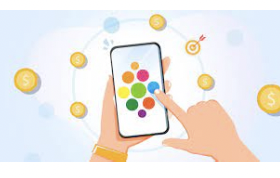With the popularity of mobile applications over the past decade, it’s no wonder many entrepreneurs have begun to explore ways to monetize those apps and capture a piece of this massively lucrative industry. After all, estimates indicate that global mobile app revenue for 2020 totaled nearly $107 billion, showing just how powerful this sector has become. But with this vast potential comes a unique set of challenges–from deciding what type of monetization strategy is best suited for your app to understanding which strategies are most effective within specific markets.
In this comprehensive guide, we’ll provide an overview of critical topics such as premium vs. freemium pricing models, ad placement tactics, and subscription-based services, as well as tips from industry insiders on making your app stand out in today’s highly competitive App Store economy.
Overview of the App Store Economy and Its Benefits
The App Store economy has experienced tremendous growth since its inception. Today, it has become a vast and lucrative industry, providing many benefits for developers and users alike. One significant advantage of mobile app monetization is its potential to generate significant revenue for developers from their creations. Moreover, developers can benefit from the App Store’s efficient and user-friendly platform for marketing their apps, allowing them to attract a larger audience and potentially maximize their app’s earnings potential.
On the other hand, users can access a vast array of quality apps at their fingertips, providing them with numerous options. With an ever-growing number of apps and user bases, the App Store economy is undoubtedly here to stay. Mobile app monetization is now an essential part of the app development process, and developers need to understand its fundamental concepts to potentially maximize their success.
Understanding the Different Types of Mobile Apps Monetization Strategies
When it comes to monetizing a mobile app, there are several strategies that developers can consider. Below, we’ll provide an overview of the most common app monetization strategies and discuss their pros and cons to help you determine which strategy is best suited for your app. The premium pricing model is one of the most popular mobile app monetization methods. Under this model, users pay an upfront fee in exchange for access to the full version of an application. This strategy provides developers with a reliable source of revenue and allows them to keep more control over their content by removing ads from the user experience.
Additionally, it is often easier to implement than other models since there is no need to develop additional features or content. However, it can be difficult for developers to attract users to pay upfront for an app in the App Store economy, and the initial cost of downloading the app may deter potential customers from using it.
In contrast, freemium apps are free to download but require users to purchase items within the app to access certain features or content. This model is often used in gaming apps, where users can download and play the game for free but must purchase additional items such as extra levels, characters, etc. This strategy allows developers to make money from a more extensive base of users since those who cannot afford to pay upfront can still access the app. However, convincing users to make in-app purchases can be challenging, and it may require a significant amount of marketing.
Finally, developers can also monetize their apps through ads or subscriptions. Ads are typically displayed within the app or as a banner on the user’s device. Through this method, developers receive revenue each time a user clicks on an ad. Subscriptions are often used to provide users with access to premium content or services not available in the app’s free version. This strategy can provide developers with a steady income stream and give users access to exclusive features, which have become increasingly popular among mobile app users.
In-App Purchases – Unlockable Content, Subscriptions and Ads
In-app purchases are an increasingly popular method of monetizing mobile apps. This strategy allows users to purchase additional items or features within the app, such as extra levels, characters, or other forms of content. In addition to unlocking extra content and features, in-app purchases can include subscriptions to premium services or access to ad-free app versions.
For example, many popular gaming apps use the in-app purchase model to allow users to buy extra characters or levels. This strategy can be highly lucrative for developers since it gives them a steady income stream and encourages users to return to the app repeatedly. Furthermore, this method allows developers to keep control over their content as they can set the price for each item or feature.
The Pros and Cons of Free Apps and Freemium Models
Regarding mobile app monetization, free apps, and freemium models are two of the most popular strategies. Free apps provide users access to an application at no cost and can be a great way to entice potential customers who may not be willing to pay upfront for an app. On the other hand, freemium models offer users a free basic version of the app while providing additional features or content that can only be accessed by making in-app purchases.
Free apps and freemium models can be highly profitable strategies for developers, as they allow them to make money from a more extensive base of users. However, convincing users to make in-app purchases or upgrades can be challenging, so developers must ensure they have a compelling marketing strategy to encourage users to do so. Also, free and freemium apps may be subject to piracy or unauthorized use, as users can access content without paying.




